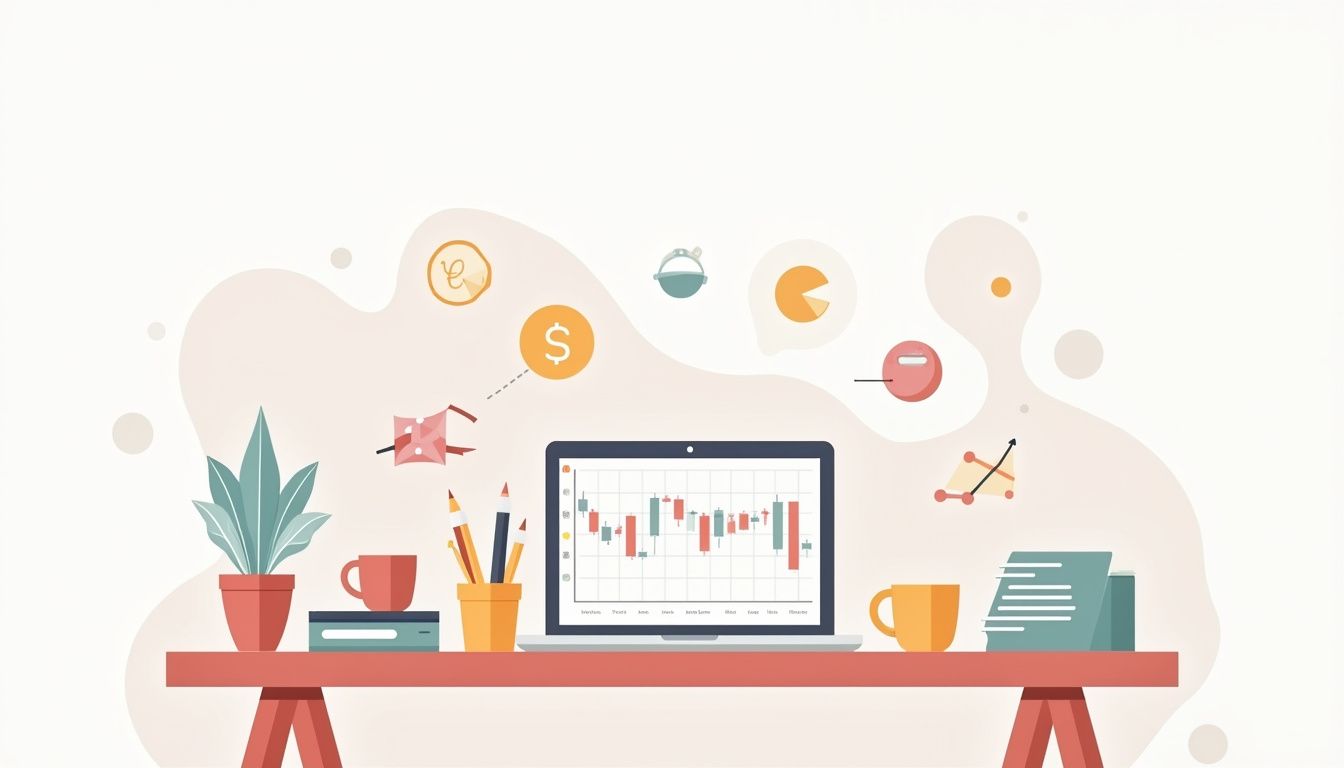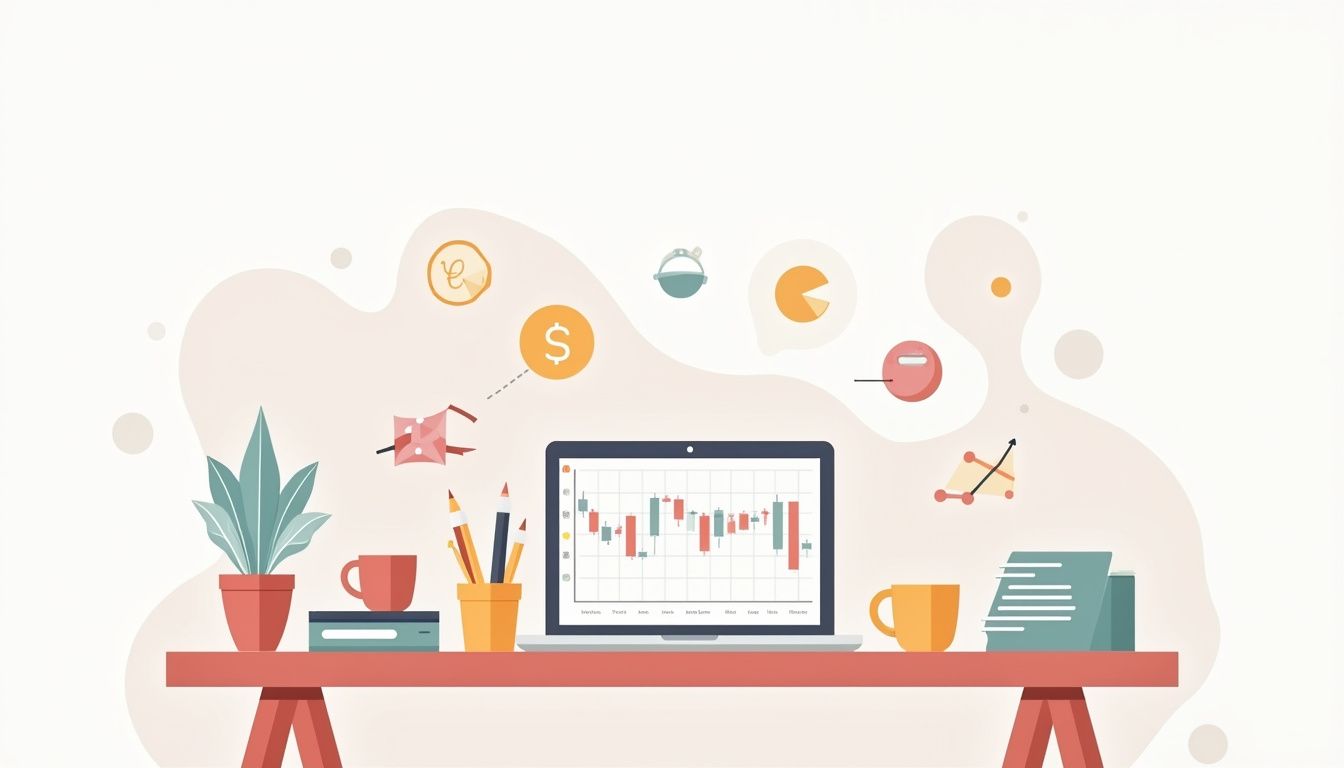

Are you struggling to understand sudden price changes in forex trading? Volatility shows how much and how quickly currency values change in the forex market. This guide explains what is volatility in FX and helps you identify its causes, effects, and tools for measurement.
Keep reading to learn strategies to manage risk during unpredictable times.
 Volatility in forex trading shows how much and how quickly exchange rates shift. Currency pairs like the Turkish Lira or Mexican Peso often experience major price fluctuations due to lower market liquidity.
Volatility in forex trading shows how much and how quickly exchange rates shift. Currency pairs like the Turkish Lira or Mexican Peso often experience major price fluctuations due to lower market liquidity.
High volatility means frequent changes, creating opportunities but also higher risks for you as a trader.
Factors such as economic events, interest rate decisions by central banks, or political instability heavily impact volatility levels. For example, if the Federal Open Market Committee hints at quantitative easing, this could trigger significant movement in currency markets.
Understanding forex volatility helps you gauge risk and choose proper trading strategies based on your risk tolerance.

Forex volatility stems from factors that impact currency values and create price fluctuations. Recognising these drivers can help you anticipate market movements and adjust your trading strategies effectively.
Political instability, trade conflicts, and elections heavily impact market volatility. For instance, political tensions between major economies often spike uncertainty in currency pairs like EUR/USD or GBP/USD.
Natural disasters such as earthquakes disrupt economic activity and supply chains, leading to significant price fluctuations in the affected regions’ currencies.
Trade deals breaking down or shifting alliances cause unpredictable movements in emerging market currencies like the Turkish Lira or Mexican Peso. Elections can create sharp swings due to policy shifts or leadership changes.
These events reduce market liquidity and increase trading risks for forex traders, especially during periods of financial crises.
Central banks play a major role in forex volatility. Their decisions on interest rates and monetary policy directly affect currency values. For example, the Federal Reserve increased interest rates 11 times over just 17 months by late 2023 to counter inflation.
The European Central Bank also raised rates 10 times during a similar timeframe. These moves led to noticeable price fluctuations across various currency pairs.
The term “hawkish” describes central bank policies focused on tightening monetary conditions, often to combat rising inflation rates. A hawkish stance signals higher interest rates or reduced money supply ahead.
Traders view this language as bullish for a country’s currency since higher yields can attract investors seeking better returns in that market. Understanding these cues helps you predict potential trading opportunities linked to economic events and announcements from central banks like the ECB and Fed.
Market sentiment reflects traders’ feelings about the forex market. Strong bullish sentiment can drive prices higher, while bearish moods often lead to declines. Emotional trading during volatile periods increases risk and impacts decision-making.
You can gauge market sentiment using tools like Bollinger Bands or the Average True Range (ATR). “High ATR values signal greater price fluctuations,” making it a popular choice for measuring volatility.
Understanding these shifts helps spot trading opportunities and manage risks effectively.
You can measure forex volatility using specific tools like technical indicators and statistical methods to assess price shifts. Explore these techniques to refine your trading strategy.
Volatility indicators help measure price fluctuations in forex trading. They assist you in understanding market volatility and making informed decisions.
Understanding these tools is crucial before exploring currency pairs with high or low forex volatility levels.
Historical volatility quantifies price fluctuations within a selected period. It calculates the square root of variance to measure standard deviation, revealing how aggressively or passively prices have shifted historically.
This metric helps you gauge past forex market behaviour and assess risk tied to specific currency pairs.
By studying historical data, you can anticipate potential future price movements more effectively. For instance, if EUR/USD recently displayed high volatility over months due to central bank decisions, it hints at possible trading opportunities ahead during similar events.
Use technical indicators like Bollinger Bands or Average True Range (ATR) to complement this analysis.
Understand the past to navigate the future in forex trading.
Certain currency pairs can experience sharp price swings, creating exciting trading opportunities for those who can manage the risks effectively.
AUD/JPY often shows high volatility due to its exposure to commodity price fluctuations. Australia’s reliance on natural resources like iron ore and coal can cause large price swings in this currency pair.
Economic growth or slowdowns in major importers such as China also influence its movements.
Central bank policies from the Reserve Bank of Australia (RBA) and the Bank of Japan (BoJ) play a key role. A hawkish stance by the RBA may strengthen AUD, while ultra-low interest rates from BoJ tend to weaken JPY.
Political stability or turbulence within either country further impacts market sentiment, creating trading opportunities for active traders.
Following the high volatility of AUD/JPY, GBP/CAD stands as another currency pair with significant price swings. You often see movements influenced by economic strength and interest rate differences between the UK and Canada.
For example, if the Bank of England adopts a hawkish tone while the Canadian economy weakens, GBP/CAD may experience sharp upward moves.
Political events play a key role in its fluctuations. A leadership change in the UK or trade policy adjustments in Canada can create uncertainty, driving market volatility. Liquidity during overlapping trading sessions adds fuel to these movements.
Keeping an eye on central banks’ announcements and using technical indicators like Bollinger Bands can help you assess potential shifts in GBP/CAD’s price trends effectively.
USD/TRY is one of the most volatile currency pairs in forex trading. Political and economic instability in Turkey often triggers sudden price fluctuations. Events like elections, leadership changes, or natural disasters significantly impact its movements.
High inflation rates and geopolitical tensions also contribute to this pair’s unpredictability.
Interest rate differentials between the US Federal Reserve and the Central Bank of Turkey further drive volatility. A hawkish stance from either central bank can shift market sentiment quickly.
As an emerging market currency, the Turkish Lira reacts sharply to trader psychology and global economic events, creating both risks and trading opportunities for you to consider carefully.
Use risk management to control potential losses during volatile periods. Adjust position sizes and apply technical indicators like moving averages or Bollinger Bands for better decision-making.
Managing risk is an essential part of forex trading. It protects your capital and ensures you stay consistent during market volatility.
Hedging strategies help limit potential losses during volatile forex market conditions. They provide a layer of protection by counterbalancing risks and safeguarding profits.
Volatility drives both opportunities and risks in forex trading. Higher price fluctuations can create chances for profit, especially during geopolitical events or major announcements from central banks.
For instance, currency pairs like GBP/CAD and USD/TRY often experience sharp movements due to economic events or political instability. You must align your trading strategy with your risk tolerance and the level of market volatility you’re comfortable with.
Using tools such as Bollinger Bands and the Average True Range (ATR) helps you assess potential price swings effectively. These technical indicators guide decisions on position size and stop-loss levels during high or low volatility periods.
By planning carefully, you can avoid emotional stress caused by impulsive actions linked to sudden market changes.
Understanding forex volatility can reshape how you view trading opportunities and risks. You’ve learned how factors like economic events, interest rates, and geopolitical shifts drive price fluctuations.
Using tools such as Bollinger Bands or Average True Range helps assess market movement effectively. Keep an eye on the economic calendar to anticipate volatile moments in currency pairs like AUD/JPY or USD/TRY.
Take control by applying risk management strategies that fit your risk tolerance. Start exploring these methods today to refine your trading decisions and stay ahead in foreign exchange markets!
Volatility in forex trading refers to the size and speed of price fluctuations in currency pairs within the market.
Market sentiment impacts how traders react to events like political or economic changes, influencing high or low volatility levels.
Indicators such as Bollinger Bands, Average True Range (ATR), and standard deviation are commonly used to track price movements.
Yes, geopolitical events like elections or conflicts can lead to sudden shifts in major and emerging market currencies.
Effective risk management helps control position sizes and protects investments from unexpected losses caused by rapid price changes.
Central banks impact interest rates, inflation rates, and monetary policies, which significantly affect currency pair values in the foreign exchange market.